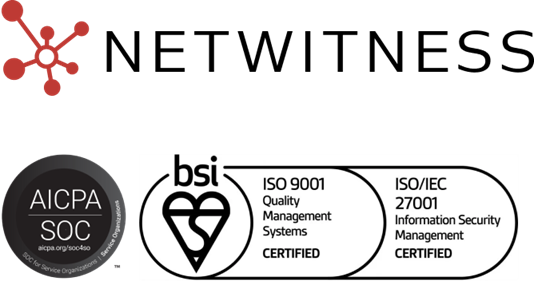What are YARA Rules?
YARA rules are a powerful tool in cybersecurity, designed to help security professionals detect and classify malware by describing patterns of malicious files. Originally developed by Victor Alvarez, YARA stands for Yet Another Recursive Acronym, and today it has become a staple in malware research, digital forensics, and threat hunting.
At their core, YARA rules are text-based patterns that allow analysts to search for specific strings, sequences, or characteristics inside files or processes. Each rule defines a set of conditions that, when met, indicate a match. This makes them especially useful for identifying malware families, detecting variants, and documenting unique behaviors.
A YARA rule typically consists of YARA elements such as metadata, strings, and conditions. Security teams can use them to scan large datasets quickly, ensuring that malicious content is caught before it spreads. The flexibility of YARA rules means they can be applied across multiple platforms, from endpoint security to memory forensics and sandboxing.
By writing precise and tested rules, security professionals create a reusable library of detection methods that evolves alongside new malware strains.
Synonyms
- YARA in Security
- YARA Signature
- YARA in Cyber Security
- YARA Rules Documentation
Why YARA Rules Matter
YARA rules are critical in the fight against modern cyber threats because they:
- Detect Variants: Malware authors often release modified versions of existing malware. YARA rules help detect these variants by focusing on underlying patterns rather than just file hashes.
- Support Threat Hunting: Analysts can proactively search across systems using YARA rules to find traces of advanced attacks.
- Enable Forensic Analysis: YARA rules speed up investigations by identifying malicious files during forensic scans.
- Reduce False Negatives: Combining different detection methods with cybersecurity YARA improves accuracy.
What this really means is that YARA rules allow organizations to stay ahead of evolving threats and create consistent, repeatable detection strategies.
YARA Elements
Every YARA rule follows a standard format made up of several YARA elements:
- Rule Name & Tags – Human-friendly identifiers that help classify the rule.
- Metadata Section – Information like author, description, and reference notes.
- Strings Section – Defines text, hex, or regex patterns that the rule will search for.
- Condition Section – Logical expressions that specify how strings and modules combine to trigger a match.
- Optional Modules – Prebuilt modules (e.g., PE, ELF, Cuckoo) extend functionality for specific file formats.
How to Create YARA Rules
Creating effective YARA rules is both a science and an art. Here’s a practical process:
- Collect Samples – Gather malicious files or behaviors you want to detect.
- Extract Indicators – Identify unique strings, binary patterns, or code sequences.
- Write the Rule Skeleton – Define metadata, strings, and conditions.
- Test the Rule – Run it against known clean and malicious files to check accuracy.
- Refine and Update – Tweak conditions to avoid false positives and expand coverage.
Looking at community-shared YARA rules examples can be helpful when starting out, but each organization should tune rules to its specific environment.
Detecting Threats with Custom YARA Rules
Custom YARA rules empower security teams to go beyond standard detections. By writing rules tailored to their unique environment, analysts can:
- Scan email attachments or file shares for hidden malware.
- Monitor endpoint processes in real time.
- Integrate with SIEM or EDR tools to automate detection workflows.
- Use YARA in memory forensics to identify in-memory payloads that never touch disk.
This flexibility makes cybersecurity YARA indispensable in modern SOC operations, especially when speed and precision are critical.
Related Terms & Synonyms
- YARA – The shortened name for YARA rules, commonly used in documentation and discussions among cybersecurity professionals.
- Yet Another Recursive Acronym – The original, full form of YARA, reflecting its origins and playful naming in the cybersecurity community.
- YARA rules examples – Practical implementations of YARA rules that demonstrate how patterns, conditions, and modules are structured to detect specific threats.
- YARA elements – The individual building blocks of a rule, including metadata, strings, conditions, and optional modules, which collectively define what the rule detects.
- YARA applications – The various use cases of YARA rules, such as malware detection, forensic analysis, memory scanning, and integration into SOC workflows.
NetWitness enhances the value of YARA rules by integrating them into its advanced detection and response platform. With the ability to apply custom rules across network, endpoint, and log data, NetWitness gives security teams greater visibility and faster threat detection. Explore how NetWitness can help you build, manage, and deploy YARA rules for stronger defenses.
People Also Ask
1. What is YARA?
YARA is an open-source tool used in cybersecurity for identifying and classifying malware. It allows analysts to write descriptive rules that match patterns in files, processes, or memory.
2. How to create YARA rules?
To create YARA rules, start by collecting malware samples, extracting unique strings or behaviors, and write a rule with metadata, strings, and conditions. Testing and refining the rules ensures accurate detection.
3. How to detect security threats using custom YARA rules?
Custom YARA rules can be deployed in file scanning, memory forensics, or endpoint monitoring. By integrating them into security workflows, organizations can identify targeted malware and detect advanced threats quickly.




